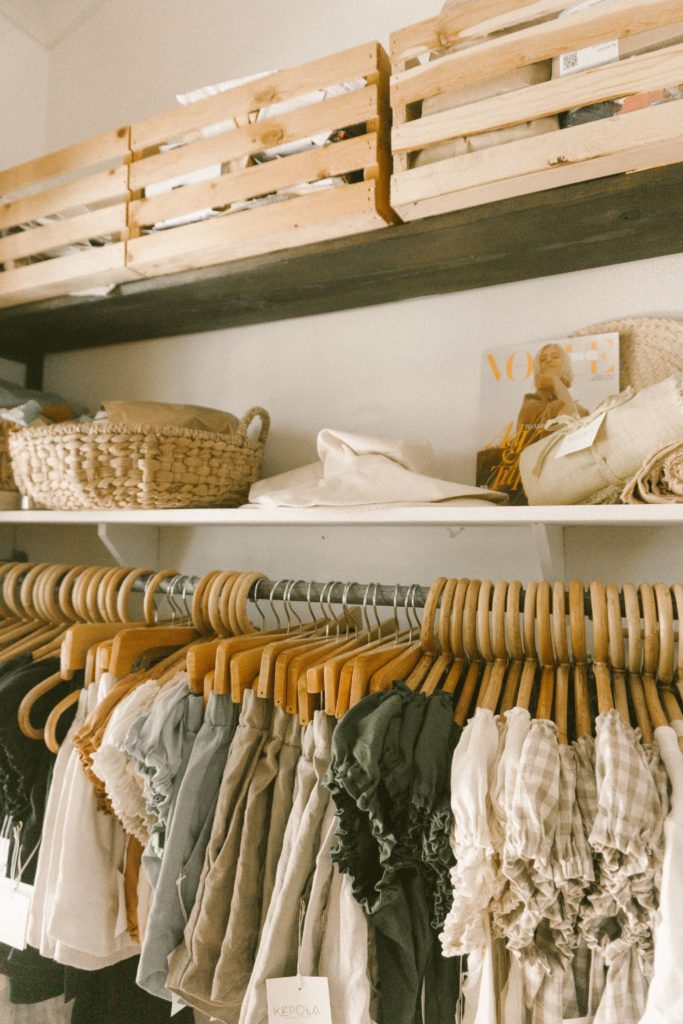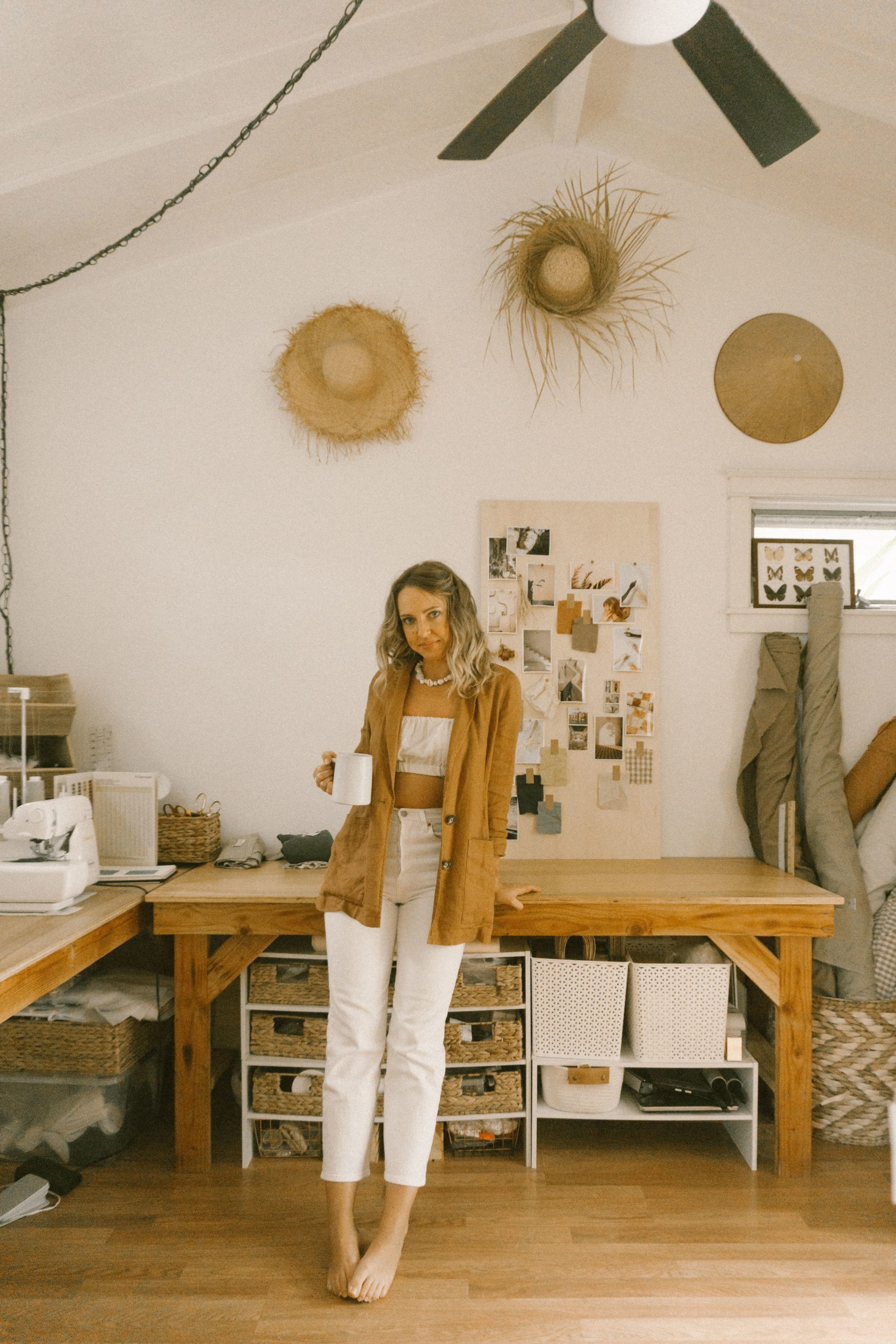MADE TO LAST —a content series exploring the concept of longevity and how it applies to our lives and businesses. Through featured interviews, brand spotlights and community conversations, together we’ll dig into ideas, perspectives and practices around sustainability, self-sufficiency, and living more with less.
I’m excited to kick-off this series by shining a light on a brand (and founder) that inspires me daily. Autumn Tyler is a dear friend of mine here in Kona, Hawai’i. She is the designer and owner of Kepola Design House, a slow fashion label that is challenging and changing the industry. On a Monday morning in October, I visited Autumn in her studio to catch-up as friends over a cup of tea and capture her in her element. Click here to view the brand spotlight video I produced from that visit.
We chatted about everything from her upbringing to new colorways to her steadfast commitment to conscious business. Keep reading for a glimpse into our conversation and to hear more about how her designs are made to last.
On “growing up living a very simple and nomadic lifestyle, where you were taught the value of creating, cultivating and self-sustaining.” —Assuming your experience as a child played a role in handcrafting your own clothing, being self-sufficient, sourcing your own materials, etc. Tell us more. How else does this value show up in your life?
My childhood played an indefinite role in the life and career I pursue today. I was taught to sew at an early age by my mom and grandma and I continued the craft on my own as I grew up. I started out sewing doll clothes, and then eventually my own clothes by Highschool. I loved thrifting, even back when it was not cool and trendy as it is today. I remember parking my car down the street and praying no one from school would see me walking in. I loved finding unique vintage pieces and weird things I could cut up and paint on. The things I made were never very cool, and of course weren’t plastered with labels like all of the other kids’ clothes were, but I tried to find a balance, enough so that I wasn’t ostracized, at least.
I’ve spent 2021 challenging myself to not buy any new clothing, shoes, etc. unless it’s handmade or second hand. I just wanted to see if I could do it, and I’m surprised at how easy it has been. With social media, television, magazines, we are constantly bombarded with pressure to consume, consume, consume, and we so easily succumb to the pressure and persuasion. That is honestly the hardest part; to tune out the noise and just focus on what you have and what you actually ‘need’ …which I’ve learned, is not a lot.

“With social media, television, magazines, we are constantly bombarded with pressure to consume, consume, consume, and we so easily succumb to the pressure and persuasion. That is honestly the hardest part; to tune out the noise and just focus on what you have and what you actually ‘need’ …which I’ve learned, is not a lot.”


On designing pieces that are made to last (literally and figuratively). —From the quality of materials you source/use (natural fibers) to your choice to design timeless and season-less pieces. Can you speak to how what you’re creating withstands the test of time and thereby “eliminates excess waste” and “discourages the increasingly common need for fast fashion and disposable clothing.”
There are so many factors to consider when designing a new collection. Today, most fast fashion conglomerates are producing as many as 52 collections a year, that’s new trends every single week. The trends change, and consumers keep coming back for the next trend and the one after that, and it’s a never ending cycle. At KDH we produce only one collection per year, and within that is our Core Collection, which consists of the basics, the staple pieces that will rarely, if ever, go out of style. We do pay attention to the trends and the zeitgeist of our era with a few details like sleeve styles and color palettes, but we will always remain slow and steadfast in our style. I try to stay away from prints, as they tend to date pieces faster. For example, camouflage has had its’ day, and then it’s out and no one is where it is anymore, and then it comes back, and then its’ out again. These things are planned as such to keep consumerism at its peak. I’ve only just now released our first ever print this season — a classic gingham check print, that I know will be around for awhile.

“At KDH we produce only one collection per year, and within that is our Core Collection, which consists of the basics, the staple pieces that will rarely, if ever, go out of style. We do pay attention to the trends and the zeitgeist of our era with a few details like sleeve styles and color palettes, but we will always remain slow and steadfast in our style.”


On how your slower, simpler lifestyle in Hawai’i influences your work and commitment to sustainability. —Does being immersed in nature encourage your efforts?
Our environmental standards and practices wouldn’t change, despite where we are located. However, I do feel that being on an island, environmental negligence can be much more apparent to its inhabitants. As Annie Leonard says, “There is no such thing as away. When you throw something away, it must go somewhere.” This holds true even more so on a small island. Everything has to go somewhere, unfortunately somewhere ends up being throughout our land and in our surrounding oceans. Hawai’i is precious and sacred and beautiful, and she must be tended to and respected with a careful heart.
For me, sustainable standards and practices are not a choice. It’s not optional or trendy anymore, it’s the only way, or nothing at all. That’s what it has come down to.
